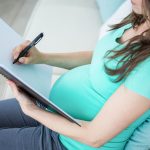 Setting up your baby’s nursery is exciting, but it can be overwhelming too. Amidst the dizzying array of options, you may wonder what you really need.
Setting up your baby’s nursery is exciting, but it can be overwhelming too. Amidst the dizzying array of options, you may wonder what you really need.
We have a separate article dedicated to recommended nursery items, but when it comes to must-haves the list is simple.
Highlights:
|
Keep in mind that buying nursery furniture doesn’t have to break the bank. You can find many items second-hand but still in great shape (but be sure, especially with cribs, that they meet current safety standards). Even if you buy items brand-new, you can find options that are safe and affordable.
Now, let’s get to those must-haves:
Crib
When choosing a crib, keep these points in mind:
- It must meet current safety standards.
- Do you want a crib that will convert to a bed? If so, a convertible crib can be an economical, long-term choice.
- Is the nursery small? You can find a crib that is smaller than a standard crib but still large enough to last until the toddler years. Or, you can look for a standard crib with built-in storage to maximize the space.
When setting up the crib, remember these safety tips:
- Consider putting the crib near the door for easy access in case of emergency.
- Avoid putting the crib near a window, where curious little hands can grab shades, curtains, cords or strings that could be a suffocation or strangulation risk. Cribs near windows also pose a fall risk once little ones start climbing.
- Avoid hanging anything on the wall behind the crib that could fall on and injure your baby.
- Keep electrical cords away from the crib.
- If you attach a mobile, be sure it’s very secure and out of your baby’s reach. Remove it as soon he can sit up.
The American Academy of Pediatrics (AAP) recommends that for the first 6 months your baby sleep in her own bed in the same room as you. Not only does this reduce the risk of Sudden Infant Death Syndrome (SIDS), it also simplifies nighttime feedings. To save space, you may consider getting a bassinet or portable crib for your bedroom.
Crib Bedding
It’s hard to resist decking out the crib with cute bedding and soft stuffed animals, but steer clear of everything but a waterproof mattress pad and a bottom sheet (both snugly fitted). Anything else in the crib could put your baby at risk of suffocation or strangulation (you can read all about safe sleep here).
Wondering when you can give your tot a blanket and stuffed animal? The AAP says there’s no research showing exactly when it’s safe to do so, but experts tend to agree that these items pose little risk to healthy babies after age 1.
Crib Mattress
There are two things to remember when choosing a crib mattress:
- It must fit snugly, with no more than two fingers of space between the mattress and the edge of the crib.
- It must be firm. Mattresses that do not hold their shape can pose a suffocation risk.
Smoke Detector
Be sure to check all smoke detectors regularly to ensure they’re working properly.
Carbon Monoxide Detector
This is important in any home with an attached garage or appliances that burn gas, oil, wood, coal or other fuels. Be sure to choose a detector that meets the UL standard 2034, and check it regularly to ensure it’s functioning properly.
Storage
Whether it’s a dresser, shelves, bins or any other storage set-up, having a place to organize baby supplies, clothes, books and toys is a sanity-saver. What’s more, it also keeps you safe from tripping over anything during the night.
Any furniture that could tip over should be secured to the wall, and anything with a hinged lid (like a toy box) should have a slow-release mechanism to protect little arms, hands and fingers.
Speaking of safety, be sure to read our article on babyproofing for a comprehensive guide to setting up a safe home before your baby arrives.








